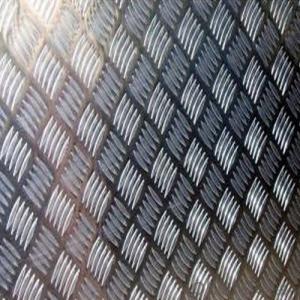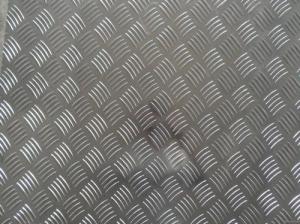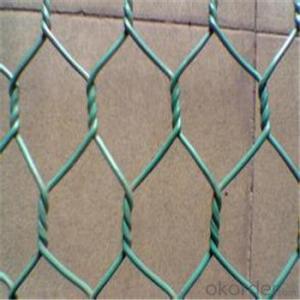1/8 Aluminum Checker Plate
1/8 Aluminum Checker Plate Related Searches
Led Light Bulbs For Ceiling Fixtures Led Lamps For Ceiling 42 In Ceiling Fan With Light Aluminum Coil Stock For Gutters Aluminum Foil For The Grill Hole Saw For Aluminum Plate Aluminum Tread Plate For Trailer Bow Plate For Aluminum Boat Aluminum Foil For Grow Room Aluminum Foil For Joint PainHot Searches
Stock Price For Aluminum Aluminum Coil Stock For Sale Aluminum Gutter Coil For Sale Used Aluminum Scaffolding For Sale 1/4 Aluminum Plate For Sale Aluminum Bar Stock For Sale Aluminum Round Stock For Sale Aluminum Diamond Plate For Sale Aluminum Scaffolding For Sale Craigslist 6061 Aluminum Plate For Sale Aluminum Dock Plate For Sale 7075 Aluminum Plate For Sale Aluminum Tread Plate For Sale Aluminum Checker Plate For Sale Aluminum Plate For Sale Near Me Plate Aluminum For Sale Aluminum Plate For Sale Aluminum Square Stock For Sale Aluminum Flat Stock For Sale Billet Aluminum Stock For Sale1/8 Aluminum Checker Plate Supplier & Manufacturer from China
Okorder.com is a professional 1/8 Aluminum Checker Plate supplier & manufacturer, offers integrated one-stop services including real-time quoting and online cargo tracking. We are funded by CNBM Group, a Fortune 500 enterprise and the largest 1/8 Aluminum Checker Plate firm in China.Hot Products
FAQ
- There are several different surface treatments available for aluminum sheets, each with its own unique properties and benefits. Some of the most common surface treatments for aluminum sheets include anodizing, painting, powder coating, and laminating. Anodizing is a popular surface treatment method that involves immersing the aluminum sheet in an electrolyte solution and passing an electric current through it. This creates an oxide layer on the surface of the aluminum, which enhances its corrosion resistance, improves durability, and can also provide decorative finishes in a variety of colors. Painting is another common surface treatment option for aluminum sheets. It involves applying a layer of paint onto the surface of the sheet, which not only enhances its aesthetics but also provides protection against corrosion and environmental elements. Painting allows for a wide range of colors and finishes, making it a versatile option for various applications. Powder coating is a technique where a dry powder is electrostatically applied to the aluminum sheet and then cured under heat, creating a durable and attractive finish. Powder coating offers excellent resistance to weathering, chemicals, and UV rays, making it suitable for outdoor applications. It also provides a wide range of color options and can be applied to achieve various textures and finishes. Laminating is a surface treatment process that involves bonding a thin layer of a different material, such as plastic or wood, onto the aluminum sheet. This not only enhances the aesthetics but also provides additional properties like scratch resistance, increased strength, and insulation. Laminating can offer a wide variety of finishes and textures, allowing for customization and versatility in design. These are just a few examples of the various surface treatments available for aluminum sheets. The choice of treatment depends on the specific requirements of the application, desired aesthetics, durability, and environmental factors. Consulting with a professional or supplier can help determine the most suitable surface treatment option for a specific project or application.
- We just bought a house with aluminum wiring and we knew about it in the inspection report, but everyone kept telling us it's no big deal. There was so much going on and I didn't look into it myself and now I just surfed the web on it and I am filled with anxiety! Please help! Did we make a huge mistake? How common are the dangers? Also, my insurance company didn't ask me about wiring, but some sites said that they don't cover aluminum wiring. Should I ask them? I am so overwhelmed and scared. I do not want a fire for my family!
- All of these answers are good. There is a concern. I would suggest that if there is a question of security -- that you slip ( or get an electrician) to slip each switch and outlet out of the wiring box and tighten the connections. As for the racoons, there are simple and pretty much low cost (under 30 bucks, voltage sensors at your local electrical supply, and maybe at Home-Depot. These really nice devices sense the presence of AC electricity in the wall, even locating the actual point where the electricity stops at a break! This is a do-it=yourself project.
- 8mm which type of aluminum plate is suitable for bending?
- What is your bending angle?If only bending is required, the quality of the aluminum sheet is of little concern.First of all, the state is the most important, the state is divided into hard, semi hard, soft (usually soft called O state)(1) the bending effect of the whole hard is not too far (the aluminum plate is H18, H19, H38 and so on are all hard)(2) the aluminum sheet in the semi hard state can be basically bent (H24, that is, semi hard)(3) the bending of the O state is certainly not a problem, but as a result of being too soft, there is little bending in this stateSecond, you have to choose pure aluminum or alloy aluminum?Pure aluminum hardness is not very good, with 1100, 1050, 1060 and so on can be recommended 1100 H26Alloy aluminum hardness is better, can use 3003, 3005, 5052 and other semi hard state can be.
- is steel better for making bicycle frames.....how does it differ from the aluminum framed bikes?
- West It is all about the ride that both frames offer. Both frames are durable. There is a slight weight difference. But both are excellent frame materials. Steel is amore forgiving and strong material. It clearly provides the best overall ride characteristics. Aluminum is lighter, not quite as durable, but does not rust. It's ride is far harder than steel. To many it is far to harsh to ride distances on. I have owned multiple steel and aluminum frames. I liked them both... they never impacted me on distance rides. I loved the steel bikes ride. I like the look and stiffness of the aluminum frames. I would probably choose an aluminum frame over steel..... Soccerref
- A dry aluminium foil paper can be bring out from oven with no burn on finger but if foil has some moisture it will result in burn why?
- The Principle behinf Microwave oven heating is that it heats up only water molecules, that is, the frequency of microwaves can only heat up water molecules ( make them oscillate and hence heat up). So if there is any trace of water or moisture on any object that you keep in the oven, it will heat up and that heat will be conducted throughout the object. Hence the foil with moisture is effectively heated whereas dry foil have no water moecule and hence will not be heated up. Hope it helps:) Can explain better if you tell me which level you are studying:)
- Yes, aluminum sheets are suitable for food contact applications. Aluminum is a non-toxic and non-reactive metal that does not leach harmful substances into food. It is widely used in the food industry for packaging, cooking utensils, and food storage containers. Additionally, aluminum exhibits excellent heat conductivity and can be easily cleaned, making it a popular choice for food-related applications.
- I'd like to have the aluminum on the etching front white. Do any of the experts know that?
- After anodizing, it turns white. If not, the aluminum plate should be white and spray polyester or fluorocarbon paint,














































